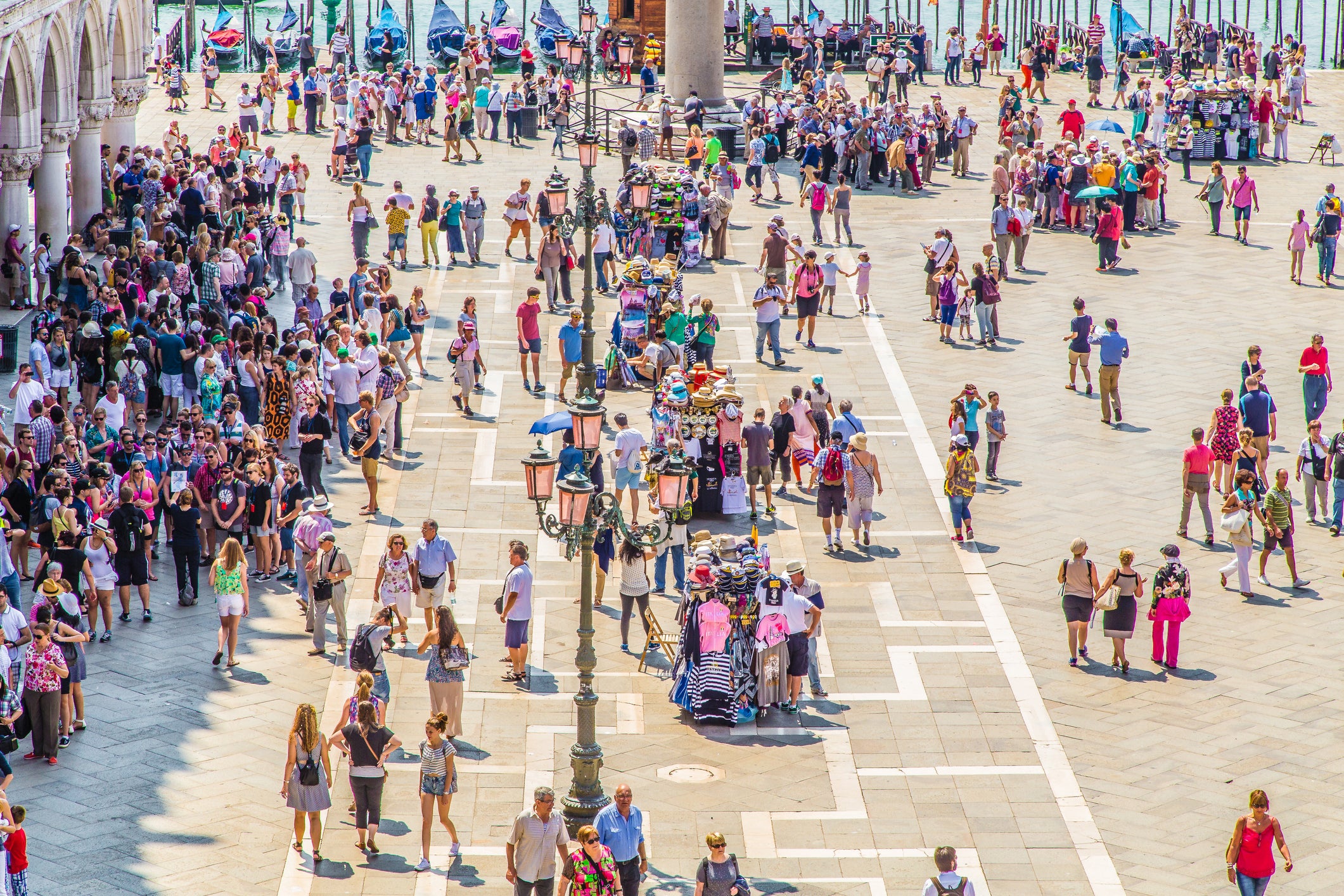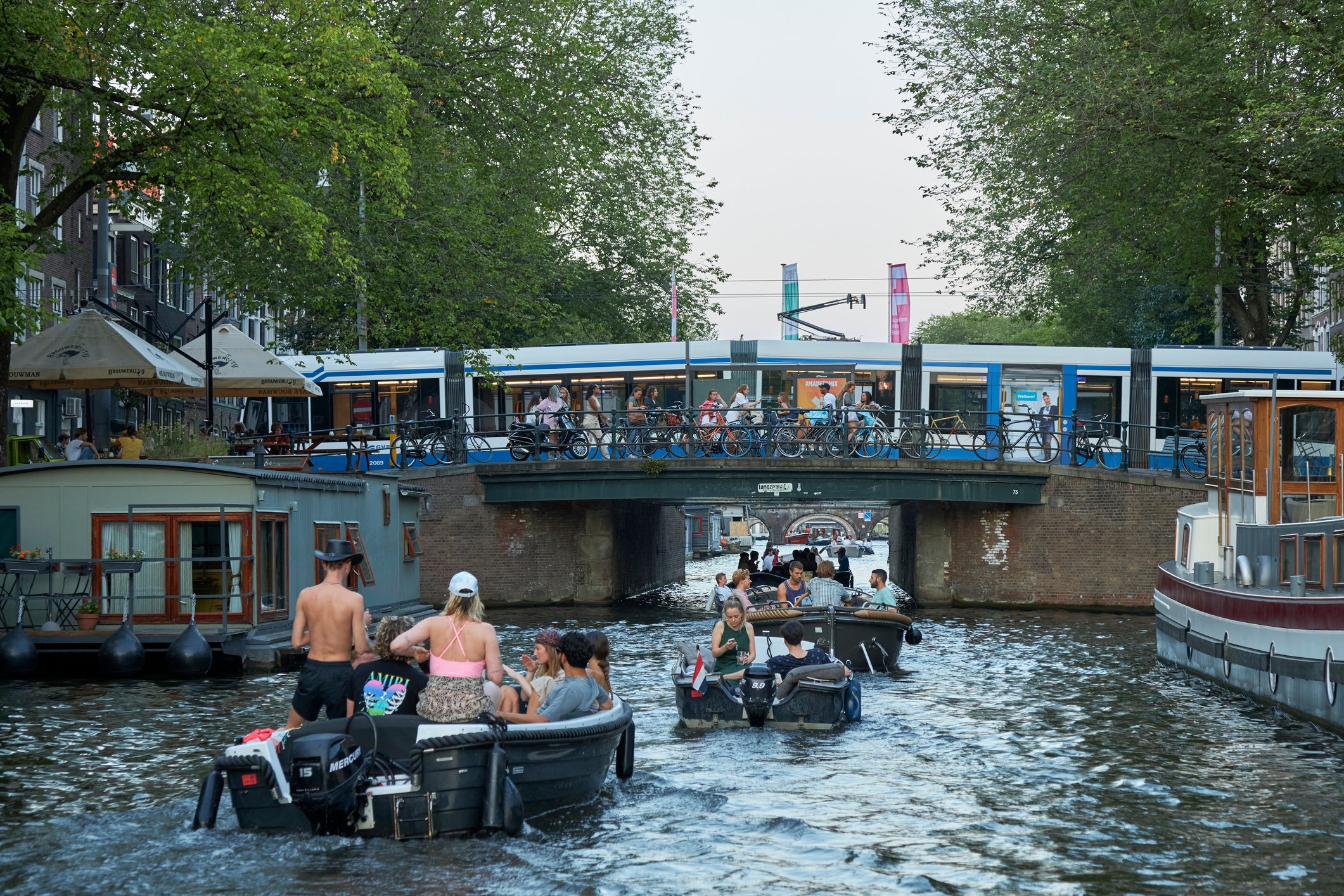The destinations that are discouraging tourists, from Amsterdam to Cornwall
With Amsterdam taking aim at disorderly Brits, we discover where else has a difficult relationship with visitors

Amsterdam’s new campaign warning British tourists against visiting the city for a “messy weekend” is the latest move in its fight against problem visitors.
As one of Europe’s most popular tourist destinations, attracting close to 20 million travellers each year, it’s not just overtourism that has been causing headaches for officials.
The city has already been cracking down on problem visitors, with earlier closing times for bars and brothels starting this weekend. A ban on smoking cannabis on the streets of the Red Light District should be in place from May, and discussions are ongoing as to whether tourists should be banned altogether from the city’s famous coffee shops.
Previously, the non-profit group Amsterdam & Partners, which describes itself as “dedicated to making Amsterdam an even better place to live, work and visit”, lobbied the Dutch government to implement a minimum flight price to discourage tourists looking for cheap city breaks, and in 2017 Amsterdam banned beer bikes, with the often rowdy activity labelled a “public order problem”.

The Dutch capital is not alone in prioritising quality over quantity when it comes to tourists. Venice, in Italy’s northern Veneto region, is on the front line of this particular battle.
For years, La Serenissima has mooted an entry ticket system to target daytrippers (those staying overnight already pay a tourist tax). The city’s mayor, Luigi Brugnaro, called it “the right way forward for a more balanced management of tourism”.
In 2022, authorities announced plans to introduce the entry fee from January 2023, but these plans have been postponed. There’s no timescale for the entry price to launch, though from April next year anyone departing from Venice Marco Polo Airport will need to pay a €2.50 surcharge. The concept of an entry fee for tourists isn’t a new idea; Bhutan, the landlocked Himalayan nation, has been a proponent of this approach in order to fulfil its policy of “high value, low impact” tourism. The number of visitors has been highly restricted since the country opened to tourism in 1974, and those who do visit must pay the ‘Sustainable Development Fee’ of US$200 (£163) per day.
Read more on sustainable travel:
Venice has also made moves to “preserve decorum and traditions” in the canal city. In 2017, it banned new kebab shops and other fast-food restaurants from opening, following similar rules introduced in Florence and Verona.
While cities such as Barcelona introduced a network of bus stops to spread travellers more evenly around the city, some in Venice – such as Melissa Conn, director of Save Venice – believes this option is “worse”, and that she would rather tourists stick to Piazza San Marco so residents can enjoy the rest of the city.
An even bigger step to control tourism saw Venice banning cruise ships from the lagoon in August 2021. Pressure groups such as No Grandi Navi (No Big Boats) have long lobbied for large vessels to be banished from Venice’s historic centre, arguing that they pollute and threaten the stability of its buildings and fragile ecosystem.
The decision came after Unesco warned that Italy could be placed on a blacklist for not banning liners from the World Heritage Site.
A mass influx of tourists from ships has been a concern in several destinations already feeling the effects of mass tourism. In recent years, the Belgian government has cut the number of ships allowed to dock at Zeebrugge port and the Greek island of Santorini, which was seeing an overwhelming 10,000 tourists arriving each day on cruises, introduced a cap which cut that number of arrivals by thousands.
Several destinations in Southeast Asia have taken to closing down areas entirely to stem damage from tourism. Notable examples include the island of Boracay in the Philippines, which was closed to travellers for six months in 2018 after the then-president Rodrigo Duterte said it was becoming a “cesspool”, and Maya Bay in Thailand, which after being made famous by the 2000 film The Beach saw up to 5,000 tourists visit a day, causing damage to coral, disturbed marine life and oil leaks from boats. It stayed off-limits from 2018 until 2022.
In the Pacific, the mayor of Maui County, Hawaii, Mike Victorino, asked airlines to decrease flights arriving there, as the state struggled with the post-pandemic travel boom. “We’re just asking for a pause,” Mr Victorino said at a press conference.
There are some less drastic measures taken to address the influx of tourists. Last summer on Italy’s Amalfi Coast, cars travelling on the busiest part of the SS163 (between Positano and Vietri sul Mare) in peak hours were subject to an alternate number plate system. Vehicles with number plates ending in odd numbers were allowed on the roads on odd-numbered dates and evens on the others.
The desire for the “right people” to visit an area has also been expressed in the UK.
Malcolm Bell, the former Visit Cornwall chief executive, told Cornwall Live last year that visitors “fall into five unofficial categories – at one level you have friends, then you have guests, then you have tourists, then you have bloody tourists, then you have f***ing emmets. You can quote me on that.”
Emmet is an old word in the Cornish dialect meaning “ant” that is used as a derogatory term for tourist.
Following the outburst, Cornish councillor Barry Jordan told The Telegraph that “we welcome all tourists. Cornwall relies on tourism.”
Join our commenting forum
Join thought-provoking conversations, follow other Independent readers and see their replies
Comments